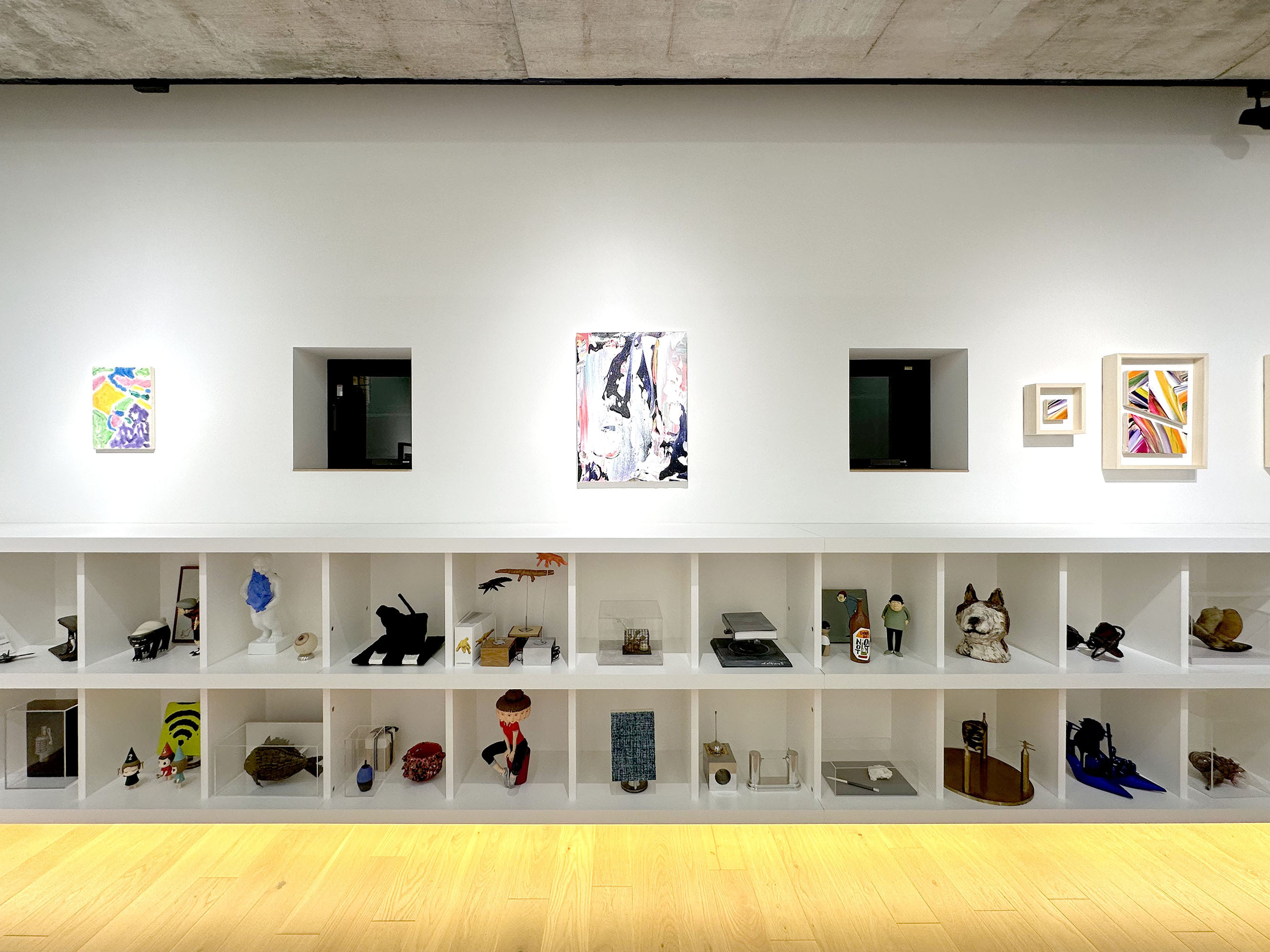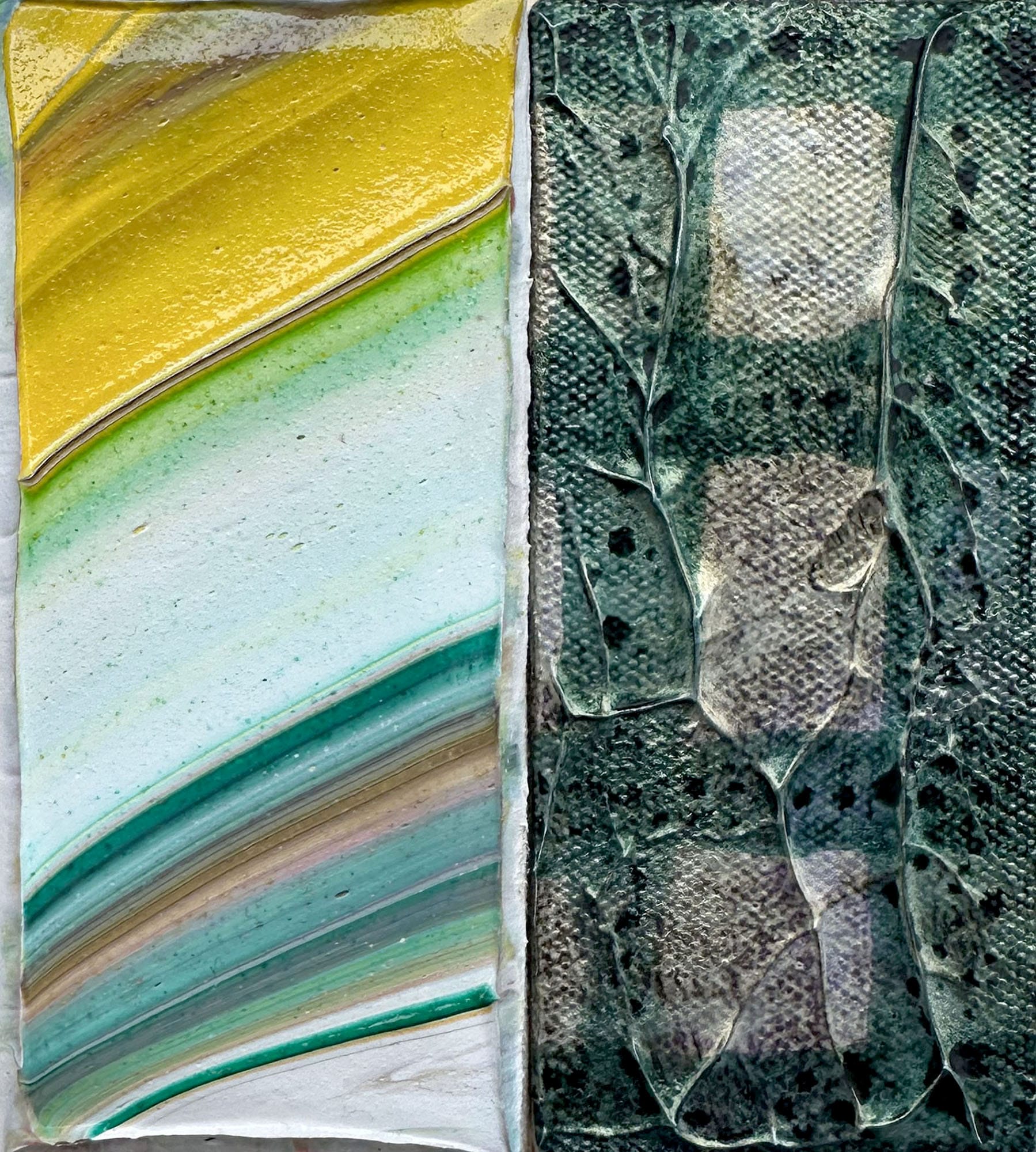AS ALWAYS
TEZUKAYAMA GALLERY (Osaka, November 2024)
︎ 360-degree camera 1
︎ 360-degree camera 2








At my childhood home in Shizuoka, there was a large camphor tree that had been toppled and uprooted by strong winds, yet had not died. To my young eyes, the exposed roots of the camphor tree looked like sheer cliffs, and I still remember how, since my family's home was near the sea, the tree became the home of countless crabs that burrowed and gathered there.
Just as we usually cannot see the condition or very existence of a tree's roots underground, I feel that what we can see in our daily lives is similarly limited. This is akin to the feeling that as we go through life, we cannot fully recount our own past experiences or upbringing. Even in today's world, where diversity is celebrated, there are still many things beneath the surface that remain complex, tangled, and unseen, like the roots of a tree.
After toppling over, the camphor tree continued to live with dignity despite its unwieldy appearance. Instead of being a sign of its downfall, the exposed roots became an ideal hiding place for the crabs, taking on a new role.
I am aware that there are "normalities" that cannot be taken for granted. It is not easy to endure unbearable suffering or inescapable misfortune. However, this childhood memory has taught me that there is always some kind of meaning and beginning in everything. All things are relative, and their meaning can change depending on how they are perceived.
Just as Marcel Duchamp's act of altering the orientation of a urinal gave birth to modern art, I believe that we witness a fundamental shift when we begin to see what was previously not visible. Facing my various struggles head on, I explore the possibilities of expression that transcend modern limitations and frameworks in the form of paintings made up of color and brushstrokes. I know that even if I fall, as always, it is the beginning of something new.
Mitsumasa KADOTA (August 2024)
Just as we usually cannot see the condition or very existence of a tree's roots underground, I feel that what we can see in our daily lives is similarly limited. This is akin to the feeling that as we go through life, we cannot fully recount our own past experiences or upbringing. Even in today's world, where diversity is celebrated, there are still many things beneath the surface that remain complex, tangled, and unseen, like the roots of a tree.
After toppling over, the camphor tree continued to live with dignity despite its unwieldy appearance. Instead of being a sign of its downfall, the exposed roots became an ideal hiding place for the crabs, taking on a new role.
I am aware that there are "normalities" that cannot be taken for granted. It is not easy to endure unbearable suffering or inescapable misfortune. However, this childhood memory has taught me that there is always some kind of meaning and beginning in everything. All things are relative, and their meaning can change depending on how they are perceived.
Just as Marcel Duchamp's act of altering the orientation of a urinal gave birth to modern art, I believe that we witness a fundamental shift when we begin to see what was previously not visible. Facing my various struggles head on, I explore the possibilities of expression that transcend modern limitations and frameworks in the form of paintings made up of color and brushstrokes. I know that even if I fall, as always, it is the beginning of something new.
Mitsumasa KADOTA (August 2024)
always
2019 Acrylic and Carborundum on cotton
2273×1820mm
2019 Acrylic and Carborundum on cotton
2273×1820mm

|

|
whirlwind 2 2023 Acrylic and Carborundum on Cotton 608×606mm Private Collection |
 onomatopoeia onomatopoeia2024 Acrylic on Cotton with frame 353×350mm (frame / 615×584mm) Private Collection |

|

| 鉾楯 2(HOKO/TATE 2) 2024 Acrylic and Carborundum on Cotton 115×100mm |

|

| 鉾楯 4(HOKO/TATE 4) 2024 Acrylic and Carborundum on Cotton 115×100mm |

|

| 鉾楯 6(HOKO/TATE 6) 2024 Acrylic and Carborundum on Cotton 115×100mm |

|

| 鉾楯 8(HOKO/TATE 8) 2024 Acrylic and Carborundum on Cotton 115×100mm |

|

| 鉾楯 10(HOKO/TATE 10) 2024 Acrylic and Carborundum on Cotton 115×100mm |

|

| 鉾楯 12(HOKO/TATE 12) 2024 Acrylic and Carborundum on Cotton 115×100mm |

|

| 鉾楯 14(HOKO/TATE 14) 2024 Acrylic and Carborundum on Cotton 115×100mm |

|

| 鉾楯 16(HOKO/TATE 16) 2024 Acrylic and Carborundum on Cotton 115×100mm |

|

| 鉾楯 18(HOKO/TATE 18) 2024 Acrylic and Carborundum on Cotton 115×100mm |

|

| 鉾楯 20(HOKO/TATE 20) 2024 Acrylic and Carborundum on Cotton 115×100mm |

|

| 鉾楯 22(HOKO/TATE 22) 2024 Acrylic and Carborundum on Cotton 115×100mm |

|
 鉾楯 24(HOKO/TATE 24) 2024 Acrylic and Carborundum on Cotton 115×100mm |

|

| 鉾楯 26(HOKO/TATE 26) 2024 Acrylic and Carborundum on Cotton 115×100mm |

|

| 鉾楯 28(HOKO/TATE 28) 2024 Acrylic and Carborundum on Cotton 115×100mm |

|

| 鉾楯 30(HOKO 2024 Acrylic and Carborundum on Cotton 115×100mm |

|

| 鉾楯 32(HOKO/TATE 32) 2024 Acrylic and Carborundum on Cotton 115×100mm Private Collection |

|

| 鉾楯 34(HOKO/TATE 34) 2024 Acrylic and Carborundum on Cotton 115×100mm |

|
 人並み (HITONAMI)
人並み (HITONAMI) 2024 Acrylic and Carborundum on Cotton 173×173mm
Private Collection
 富士山麓 (FUJISANROKU)
富士山麓 (FUJISANROKU) 2024 Acrylic and Carborundum on Cotton 223×223mm
Private Collection

the former
2024 Acrylic and Carborundum on Cotton
1306×803mm
Private Collection
2024 Acrylic and Carborundum on Cotton
1306×803mm
Private Collection

the latter
2024 Acrylic and Carborundum on Cotton
1306×803mm
2024 Acrylic and Carborundum on Cotton
1306×803mm
| Private Collection |

|



|



|

|

|

|

| 11 colors 2015 Acrylic and Carborundum on cotton 1940×1620mm |

| 松喰 (MATSUHAMI) 2009 Acrylic and Carborundum on cotton 1620×1303 mm |

| Utopia 2007 Acrylic on cotton 339×244 mm |
"Roots" and "Duchamp"
Kunihiko
Matsuba (Art Collector / Architect)
A few days after I was asked to contribute to this catalogue, I visited Kadota’s studio for another reason. He had kindly printed out a statement he had written for the "AS ALWAYS" exhibition, where he had written about “roots” and “Duchamp.” As I read through it, I realized these two elements might be significant keywords in understanding my connection with Kadota. This inspired me to explore "roots" and "Duchamp" from my perspective.
First, on “roots”: I actually have his work in my collection titled “roots”. Painted in 2010, it’s about a meter square and, as the name suggests, features a motif of roots—roots from a tree that once stood at Kadota’s former home, if I remember correctly. I was immediately drawn to it when I first saw it.
The period when“roots” was created seems to coincide with a time when Kadota was struggling as an artist. The dark blue, prickly roots seem to convey a sense of frustration and struggle from that time. But at the same time, the touches of pink in the background suggest a glimmer of the joy and progress he would later achieve. I felt a deep connection with that painting because it reminded me of a time when I, too, was often irritated by my struggles to break free from my environment. Perhaps that’s why I was so drawn to it.
I first met Kadota was in 2016, eight years ago, when I attended the STROKESexhibition at SEZON ART GALLERY in Omotesando. I bought a piece titled “line works 3”. I still remember vividly how I immediately decided to purchase the work when I saw the striking and colorful work exhibited on the gallery wall. It was my first gallery purchase, and I was profoundly moved, both by the chance encounter with the work and by the sense of exhilaration in acquiring it. I think that thrill was what first fueled my continued passion for collecting art.
Since then, our relationship has grown not just as artist and collector through studio visits and regular purchases, but also as friends. We sometimes go out for drinks two or three times a week. Then, in the spring of 2022, Kadota asked about the expansion of a carport to his studio and home. It was an exciting project that I happily accepted, and we moved forward with the design. Due to the unique constraints of the site, the carport had to have an asymmetrical roof that traced the boundary between the lot and the existing building.
I liked the roof’s shape, but there was a major issue. In most buildings, beams meet at 90 degrees. However, to support this irregular roof, each beam had to be offset by 1 or 2 degrees. This slight deviation was hard to perceive by the human eye but increased costs because the nonstandard parts required custom materials. Most people would have asked us to reduce the costs by standardizing the angles.
But Kadota, the artist, saw it differently. He remarked:
"Even a barely noticeable deviation of just a few degrees requires extra effort, friction, and invisible energy. Perhaps the same could be said for humans and society. There are things that we can’t voice aloud or easily explain, and they may suffer in silence due to a slight, nearly imperceptible misalignment.
I believe we have countless perceptions we haven’t yet been able to share, which is why intolerance and online abuse are so widespread today. I never imagined I would encounter this nuanced dilemma in such a tangible way, within the field of economics."
(Two Angles by Mitsumasa Kadota)
With this insight, Kadota uncovered a different kind of value within the carport beyond just its architecture.
Witnessing this artistic viewpoint made me realize that this slight deviation was, in a way, similar to the spirit of Duchamp’s Fountain. Just as Duchamp inscribed "R. Mutt 1917" on a men’s urinal to challenge and transform its original context, Kadota’s carport presented a new perspective on its material. I felt I was witnessing the essence of contemporary art. To capture this, I titled the carport “Readymade” , borrowing from Duchamp’s conceptual framework.
Originally, “roots” and “Duchamp” (that is, the carport) were unrelated in my mind. But Kadota’s statement linked the two for me, and now I look forward to discovering the significance this connection will have in the future. However, I can’t help but wonder why he chose to include these two keywords in his statement. Was he hoping to prompt me to write something in response, or am I just overthinking it?
Well, I might get an answer by visiting the "AS ALWAYS" exhibition. Until then, I’ll leave this question open.